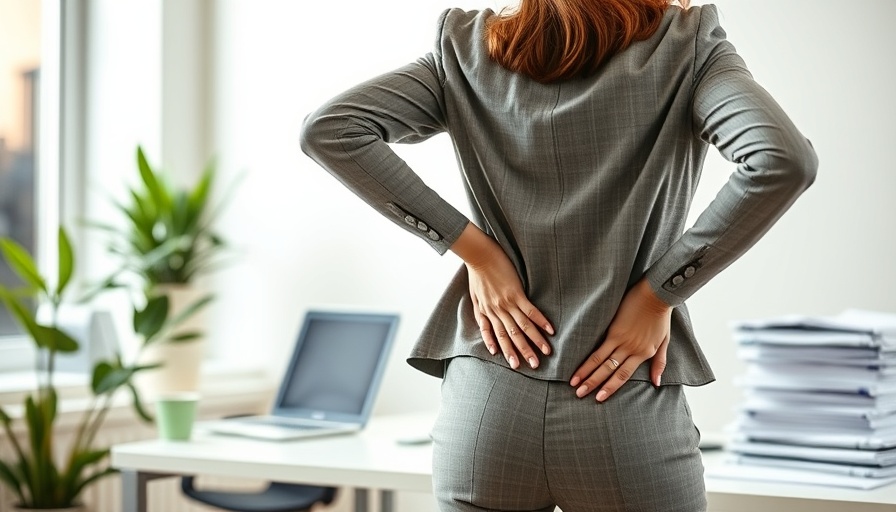
Spinal Stenosis: Understanding the Condition
Spinal stenosis is a condition characterized by the narrowing of the spinal canal, which can compress the spinal cord and nerves. This narrowing can stem from various causes, including aging, arthritis, and disc herniation. However, an often-overlooked contributor is a sedentary lifestyle, particularly the excessive sitting that is all too common in our modern world. The symptoms can develop quietly over time and may be mistaken for normal wear and tear. For individuals, especially women aged 35 to 55, who lead a sedentary routine, recognizing these early signs can be crucial.
The Symptoms: What to Look Out For
The onset of spinal stenosis symptoms is typically gradual. Those affected might notice:
- Lower back pain: This pain often intensifies after prolonged periods of sitting or standing.
- Leg numbness or tingling: Discomfort may worsen during activities, indicating nerve involvement.
- Weakness: Some individuals may experience weakness in their legs or feet, making activities like walking challenging.
- Balance issues: These can stem from pain or nerve compression, leading to a higher risk of falls.
- Relief when seated: Interestingly, many find relief when sitting or leaning forward, as it alleviates pressure on the spine.
Sitting: A Silent Precipitator
In today’s work culture, long hours spent sitting are commonplace. Whether at a desk, in a car, or lounging at home, prolonged immobility can lead to detrimental effects on spinal health. Studies have shown that a sedentary lifestyle may not only trigger symptoms of spinal stenosis but can also hasten its progression. For those who are conscious of their health, this realization can serve as a wake-up call to incorporate movement into their daily routines.
Strategies for Relief: Ergonomics and Beyond
Fortunately, there are effective measures to reduce discomfort and possibly slow the progression of spinal stenosis. Here are some actionable insights:
- Ergonomic Solutions: Utilizing products like memory foam seat cushions and lumbar supports can significantly enhance sitting posture, reducing strain on the back.
- Regular Breaks: Incorporating short breaks throughout the day to stand, stretch, and walk can help alleviate pressure on the spine and improve circulation.
- Exercise Routine: Low-impact exercises such as swimming or yoga can strengthen core muscles and maintain flexibility, both of which support spinal health.
- Chiropractic Care: Regular visits to a chiropractor can offer adjustments that relieve pain and improve spinal alignment, making them a valuable resource for those dealing with spinal stenosis.
- Mindful Posture: Being aware of your sitting posture—keeping your back straight and feet flat on the floor—can also reduce discomfort and prevent further nerve irritation.
Future Predictions: Understanding Long-Term Implications
As our lives become more sedentary, it is essential to anticipate the increasing prevalence of spinal stenosis. Experts predict rising rates of this condition in younger populations, as work environments shift towards more desk-based tasks. This underscores the importance of proactive measures such as education on spinal health, ergonomic product development, and improvements in workplace designs to support movement and proper posture.
Take Action: Prioritize Your Spinal Health
In light of the rising concern about sedentary lifestyles, now is the ideal time to assess your daily habits. Are you spending too much time sitting? Consider implementing small changes in your routine to prioritize your spinal health. By recognizing the signs of spinal stenosis early, seeking preventative measures, and committing to an active lifestyle, you can pave the way for a healthier future.
 Add Row
Add Row  Add
Add 




 Add Row
Add Row  Add
Add 

Write A Comment